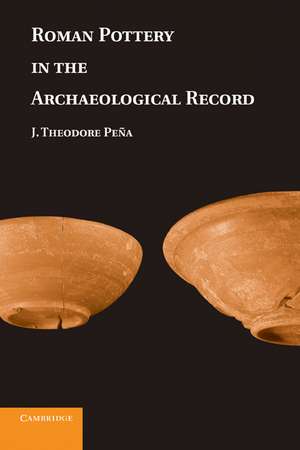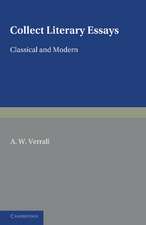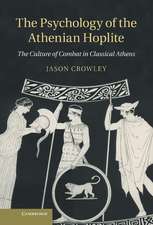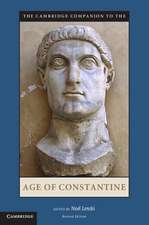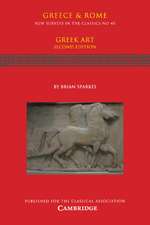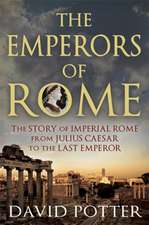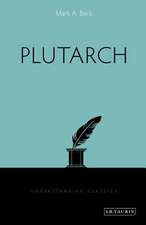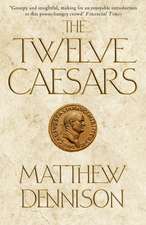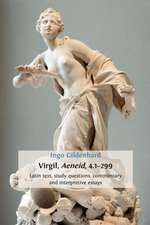Roman Pottery in the Archaeological Record
Autor J. Theodore Peñaen Limba Engleză Paperback – 6 mar 2011
| Toate formatele și edițiile | Preț | Express |
|---|---|---|
| Paperback (1) | 275.85 lei 6-8 săpt. | |
| Cambridge University Press – 6 mar 2011 | 275.85 lei 6-8 săpt. | |
| Hardback (1) | 601.94 lei 6-8 săpt. | |
| Cambridge University Press – 29 apr 2007 | 601.94 lei 6-8 săpt. |
Preț: 275.85 lei
Nou
Puncte Express: 414
Preț estimativ în valută:
52.78€ • 55.11$ • 43.59£
52.78€ • 55.11$ • 43.59£
Carte tipărită la comandă
Livrare economică 16-30 aprilie
Preluare comenzi: 021 569.72.76
Specificații
ISBN-13: 9780521181853
ISBN-10: 0521181852
Pagini: 450
Ilustrații: 120 b/w illus. 9 maps 12 tables
Dimensiuni: 152 x 229 x 23 mm
Greutate: 0.59 kg
Editura: Cambridge University Press
Colecția Cambridge University Press
Locul publicării:New York, United States
ISBN-10: 0521181852
Pagini: 450
Ilustrații: 120 b/w illus. 9 maps 12 tables
Dimensiuni: 152 x 229 x 23 mm
Greutate: 0.59 kg
Editura: Cambridge University Press
Colecția Cambridge University Press
Locul publicării:New York, United States
Cuprins
Introduction; 1. A model of the life cycle of roman pottery; 2. Background considerations; 3. Manufacture and distribution; 4. Prime use; 5. The reuse of amphorae as packaging containers; 6. The reuse of amphorae for purposes other than as packaging containers; 7. The reuse of the other functional categories of pottery; 8. Maintenance; 9. Recycling; 10. Discard and reclamation; 11. Modeling the formation of the Roman pottery record.
Recenzii
'Peña's book is an essential study that needed to be carried out, and its author was ideally placed to undertake this task. … we strongly recommend that Peña's rigourous work should become a component of the training of all field archaeologists and pottery specialists involved in the study of Roman sites.' Antiquity
'Peña establishes himself as a leading figure in the [field] of roman archaeology with this book, which provides a theoretical map of the life of any excavated Roman pottery shred. It should be read wherever archaeology is taught and will be an important resource for students of Roman pottery, for whom the illustrations, appendices, and maps will be particularly helpful. Furthermore, the book sets a new intellectual level for the study of excavation pottery in Old World archaeology. His book belongs in the reference library, not just of every excavation director and pottery analyst on Roman sites, but also of any archaeologist working with a sophisticated urbanized by preindustrial culture.' American Journal of Archaeology
'The book will be stimulating reading to classical archaeologists who work with excavated pottery, particularly from urban and domestic sites.' Bryn Mawr Classical Review
'By encouraging us to look more carefully at the behaviour that lies behind assemblage formation, the book has been entirely successful in its aims.' Journal of Roman Archaeology
'Usefully draws on a wide range of literary and pictorial sources to elicit information on poetry use … this book should spur researchers to look more closely at their assemblages.' Current Archaeology
'Peña establishes himself as a leading figure in the [field] of roman archaeology with this book, which provides a theoretical map of the life of any excavated Roman pottery shred. It should be read wherever archaeology is taught and will be an important resource for students of Roman pottery, for whom the illustrations, appendices, and maps will be particularly helpful. Furthermore, the book sets a new intellectual level for the study of excavation pottery in Old World archaeology. His book belongs in the reference library, not just of every excavation director and pottery analyst on Roman sites, but also of any archaeologist working with a sophisticated urbanized by preindustrial culture.' American Journal of Archaeology
'The book will be stimulating reading to classical archaeologists who work with excavated pottery, particularly from urban and domestic sites.' Bryn Mawr Classical Review
'By encouraging us to look more carefully at the behaviour that lies behind assemblage formation, the book has been entirely successful in its aims.' Journal of Roman Archaeology
'Usefully draws on a wide range of literary and pictorial sources to elicit information on poetry use … this book should spur researchers to look more closely at their assemblages.' Current Archaeology
Notă biografică
Descriere
A rich portrayal of the dynamic that shaped the archaeological record of the ancient Romans.
